The Great Smoky Mountains National Park draws millions of visitors each year, and for good reason. This ancient mountain range offers some of the most spectacular hiking in the eastern United States, with misty peaks, cascading waterfalls, and forests that seem to stretch on forever. But if you’ve ever tried to find a parking spot at popular trailheads like Cataract Falls or Laurel Falls, you know that solitude can be hard to come by.
The good news is that this massive park contains over 800 miles of trails, and many of them see a fraction of the foot traffic that the famous ones do. These hidden gems offer the same stunning scenery and rewarding experiences without the crowds that can make hiking feel more like a parade than a peaceful nature walk.
Here is a list of 20 Great Smoky Mountains trails that offer incredible experiences with fewer crowds.
Porters Creek Trail
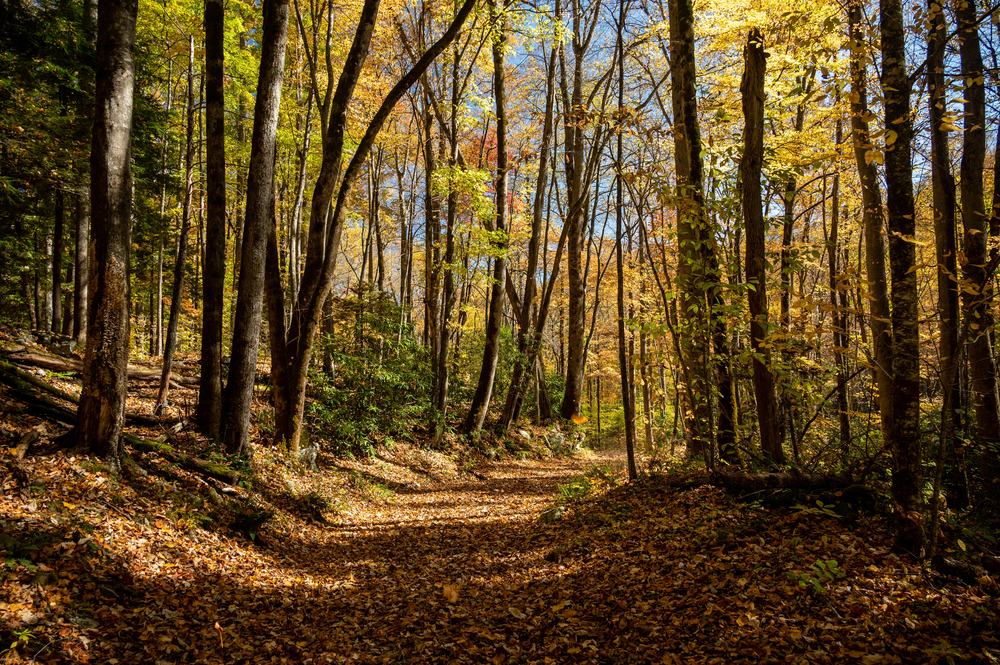
This 4-mile round-trip trail starts near the Greenbrier area and leads you through some of the park’s most beautiful old-growth forest. The path follows an old logging road for much of the way, making it relatively easy to navigate while still feeling wild and untouched. You’ll pass remnants of old homesteads, including stone walls and chimneys that tell the story of the mountain families who once called this place home. The trail ends at a series of small waterfalls that create perfect spots for a peaceful lunch break.
Oconaluftee River Trail
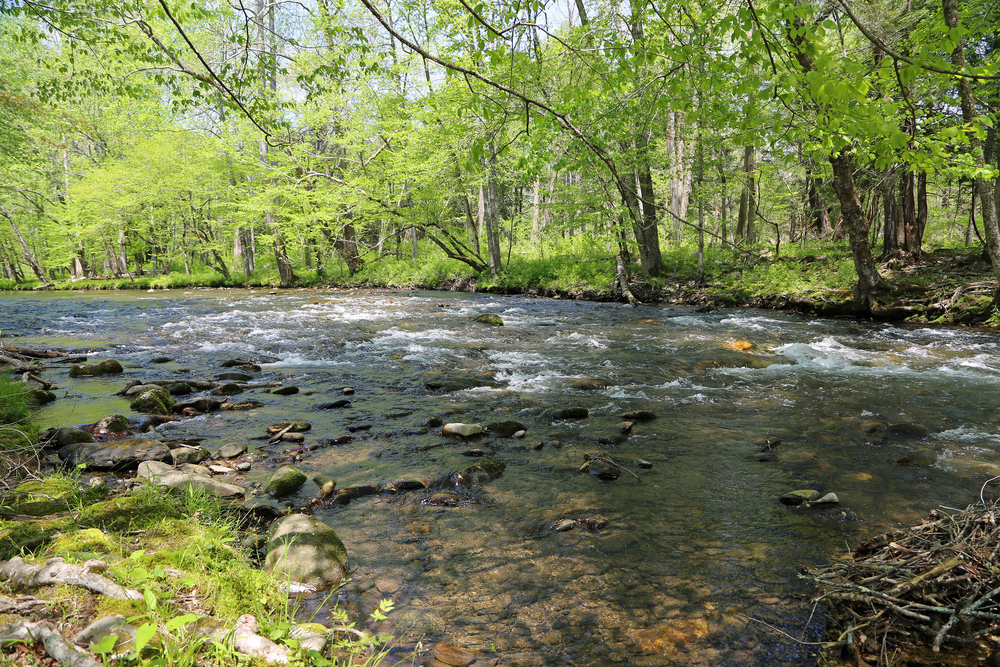
Don’t let the paved surface fool you — this 3-mile round-trip trail offers some of the best wildlife viewing in the park. The path runs alongside the Oconaluftee River, and early morning hikers often spot deer, wild turkeys, and even the occasional black bear coming down to drink. The trail connects the Oconaluftee Visitor Center with the Mountain Farm Museum, passing through meadows that explode with wildflowers in spring and summer. It’s also one of the few trails in the park where you can bring your bike, making it perfect for families with different fitness levels.
Cosby Nature Trail
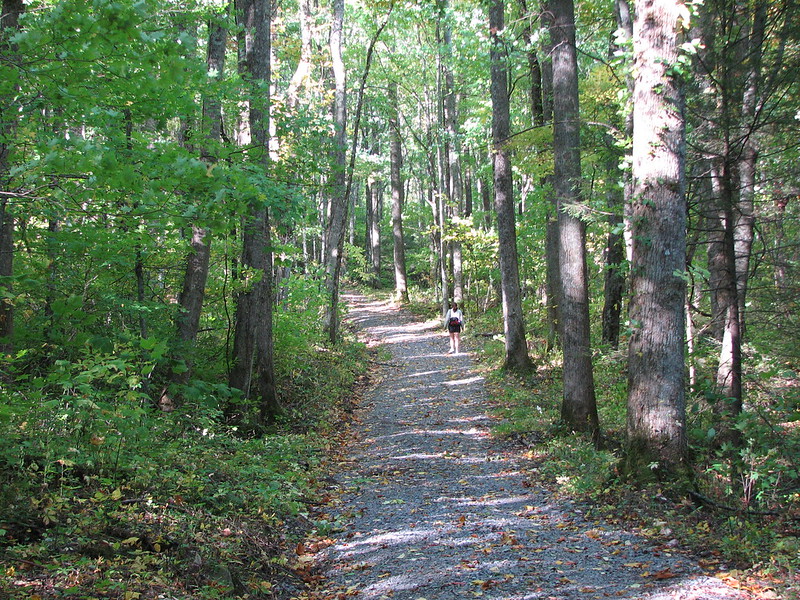
This gentle 1-mile loop near the Cosby Campground is like taking a botany class in the wild. The trail winds through different forest types, from hemlock groves to hardwood forests, with interpretive signs that help you identify the incredible diversity of plant life. Spring brings a carpet of wildflowers, including trillium, bloodroot, and wild ginger, all of which most visitors never get to see. The trail also passes by Cosby Creek, where you can often hear the splash of native brook trout jumping for insects.
Kephart Prong Trail
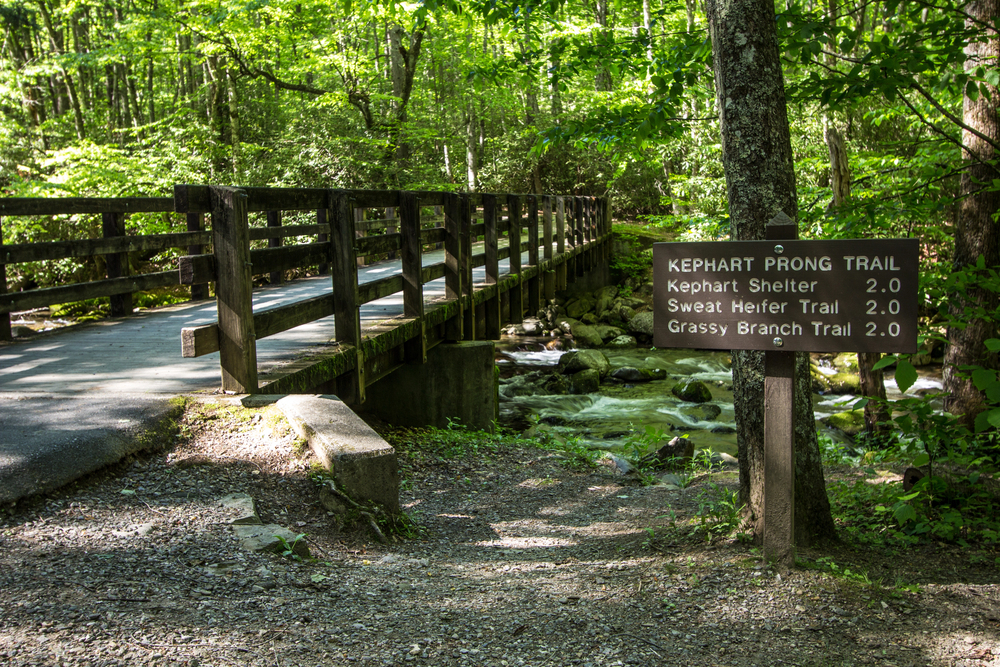
This 4.2-mile round-trip hike takes you deep into the park’s logging history while offering some of the most peaceful creek-side walking you’ll find anywhere. The trail follows an old railroad grade used by the Champion Lumber Company in the early 1900s, and you can still see remnants of the old logging operation scattered throughout the forest. The path parallels the Oconaluftee River for most of its length, providing a constant soundtrack of flowing water and plenty of opportunities to spot salamanders and other creek creatures. The trail ends at the Kephart Prong Shelter, a perfect spot to rest and enjoy the solitude.
Gatlinburg Trail
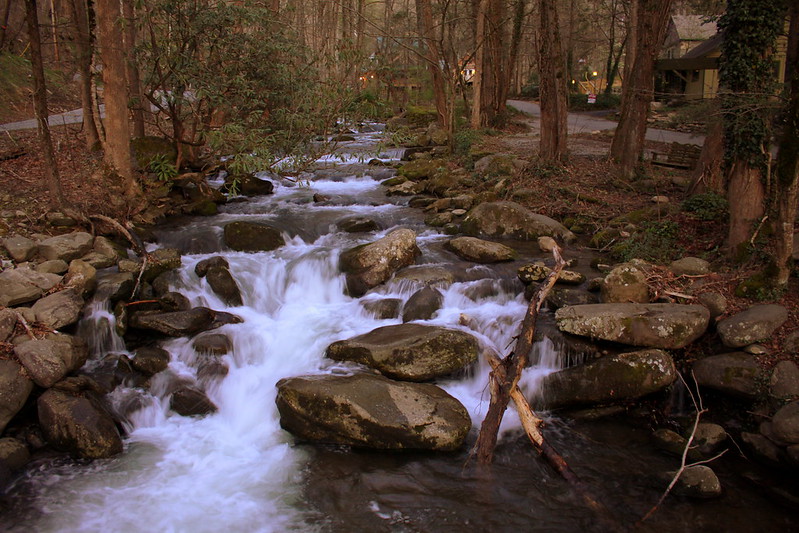
Starting right from the Sugarlands Visitor Center, this 3.8-mile round-trip trail offers an easy introduction to the park’s ecosystem without the crowds you’ll find on more famous paths. The paved trail follows the West Prong of the Little Pigeon River, and the gentle grade makes it accessible for hikers of all abilities. You’ll pass through beautiful hardwood forests and cross several small bridges that offer great photo opportunities. The trail also connects to the Cataract Falls trail, so you can extend your hike if you’re feeling ambitious.
Boogerman Trail
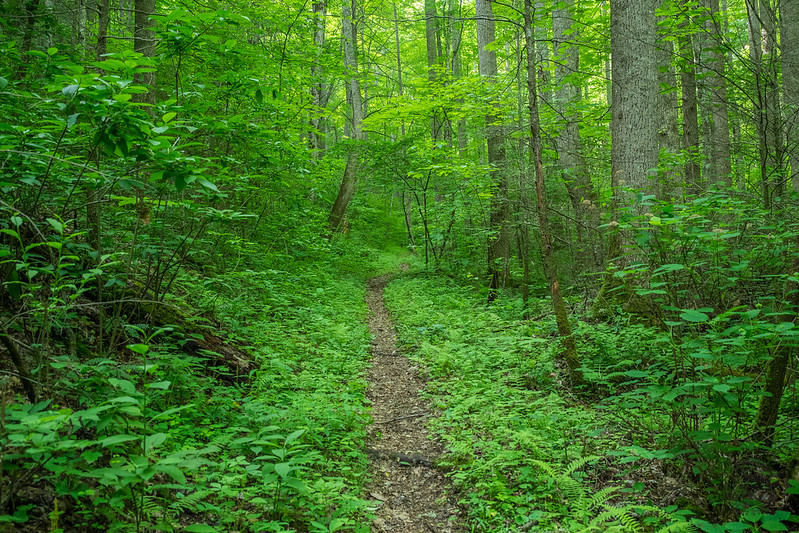
With a name like that, you know this trail has some character. This 7.4-mile loop starts from the Caldwell Fork trailhead and takes you through some of the park’s most pristine old-growth forest. The trail gets its quirky name from Robert ‘Boogerman’ Palmer, a local resident who refused to sell his land to logging companies in the early 20th century. Thanks to his stubbornness, hikers today can walk through massive tulip poplars and hemlocks that are hundreds of years old. The trail also passes several old homesites, including stone foundations and rusty farm equipment that nature is slowly reclaiming.
Twentymile Creek Trail
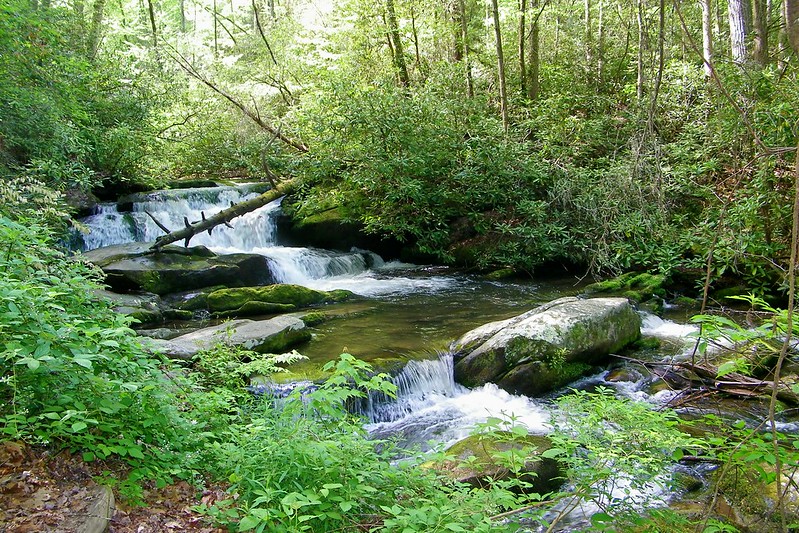
greer82496/Flickr
This 8-mile round-trip trail starts from the remote Twentymile area and offers some of the most peaceful hiking in the entire park. The trail follows Twentymile Creek through a gorgeous valley filled with rhododendron and mountain laurel that bloom spectacularly in late spring and early summer. The path is well-maintained but sees far fewer visitors than trails on the Tennessee side of the park. You’ll cross the creek several times on sturdy bridges, and the sound of rushing water creates a natural soundtrack for your entire hike.
Albright Grove Trail
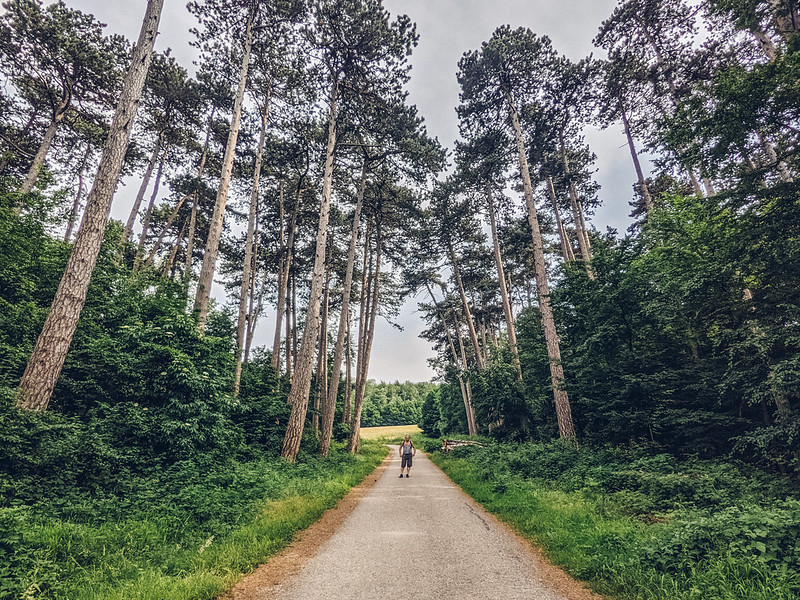
This 1.4-mile loop trail showcases some of the largest trees in the entire park, yet somehow remains relatively unknown to casual visitors. The trail starts from the Maddron Bald Trail and takes you through a grove of ancient hemlocks and tulip poplars that will make you feel like you’ve entered a cathedral. Some of these giants are over 25 feet in circumference and tower more than 100 feet above the forest floor. The trail includes some steep sections, but the payoff is worth every step when you’re standing among these living monuments to the old-growth forests that once covered the entire region.
Spruce Flats Falls Trail
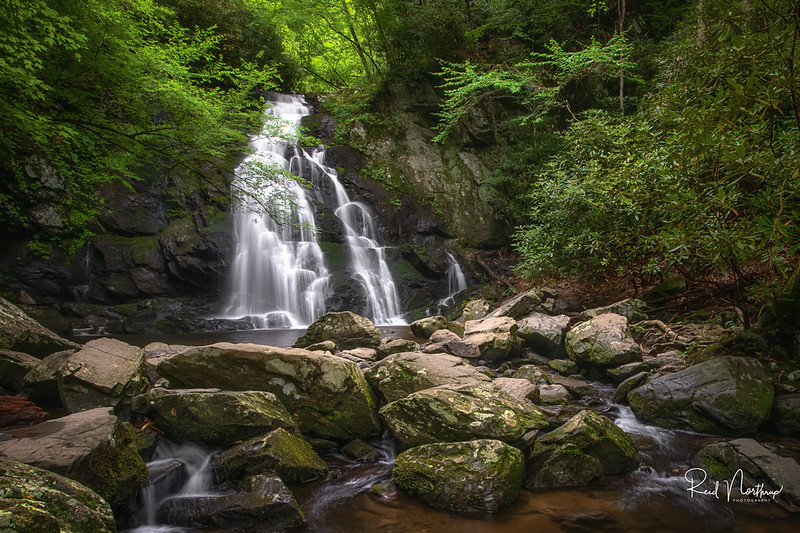
This 2-mile round-trip hike leads to one of the park’s most beautiful waterfalls, yet it sees a fraction of the visitors that flock to more famous cascades. The trail starts from the Tremont Institute and follows the Middle Prong of the Little River through a forest filled with massive boulders and towering trees. The 30-foot waterfall at the end drops into a deep pool that’s perfect for cooling your feet on hot summer days. The trail also passes the remnants of old logging camps, including rusted machinery that’s slowly being swallowed by the forest.
Henwallow Falls Trail
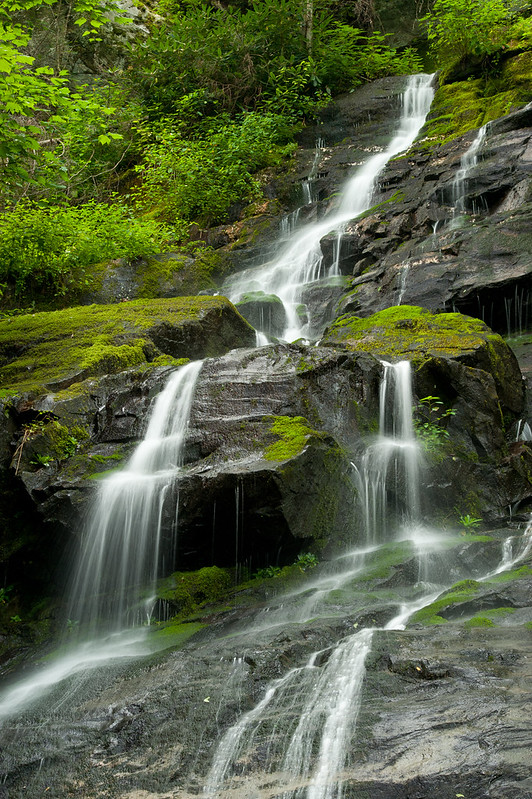
Starting from the Cosby Campground, this 4.4-mile round-trip trail takes you to a 90-foot waterfall that rivals anything in the park. The trail follows Gabes Mountain Trail for the first mile before branching off toward the falls. The path winds through beautiful hardwood forests and crosses several small streams that feed into the main waterfall. The falls themselves drop in a series of cascades, creating pools and smaller waterfalls that make for great photography opportunities. The remoteness of this trail means you’ll often have the entire area to yourself.
Injun Creek Trail
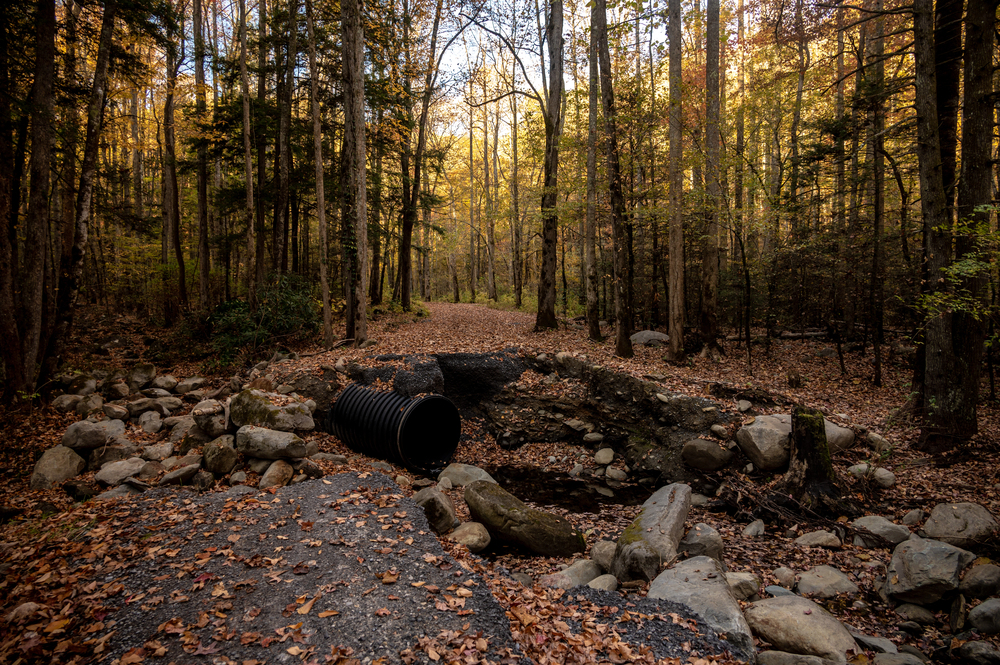
This 3.5-mile round-trip trail starts from the Greenbrier area and offers one of the most diverse hiking experiences in the park. The trail follows Injun Creek through a variety of forest types, from rhododendron-lined creek beds to open hardwood forests filled with wildflowers. You’ll pass several old homesites, including the remains of a grist mill that once served the local community. The trail ends at a series of small waterfalls and deep pools that provide excellent swimming opportunities during warmer months.
Maddron Bald Trail
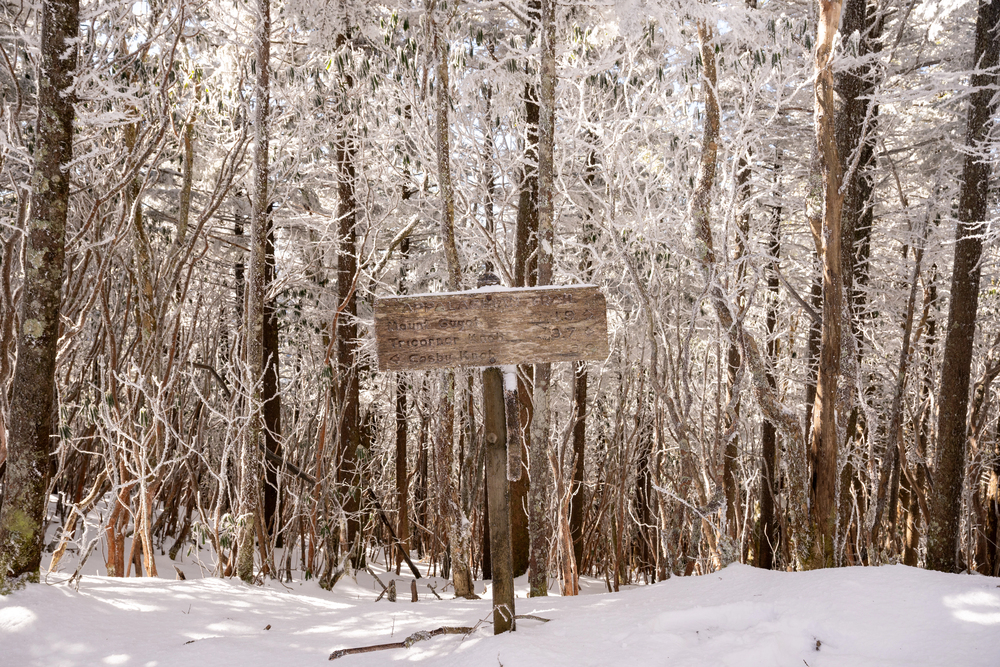
This challenging 8-mile round-trip trail starts from the Greenbrier area and takes you to one of the park’s most spectacular viewpoints. The trail climbs steadily through beautiful forests, passing several old homesites and a historic cemetery along the way. The final push to the bald involves some steep climbing, but the 360-degree views from the top are absolutely worth the effort. On clear days, you can see for miles in every direction, with the main ridge of the Smokies stretching out like a green carpet below you.
Cucumber Gap Trail
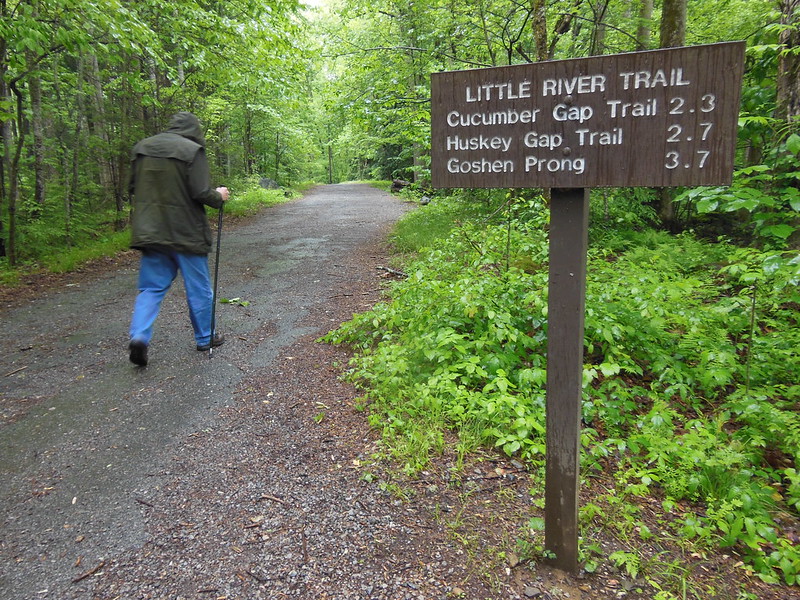
This 5.2-mile round-trip trail offers a perfect introduction to the park’s backcountry without the crowds you’ll find on more popular routes. The trail starts from the Elkmont area and climbs gradually through beautiful hardwood forests filled with wildflowers in spring and brilliant colors in fall. The path follows an old logging road for much of its length, making navigation easy while still providing a wilderness experience. You’ll pass several small streams and enjoy occasional glimpses of the surrounding mountains through breaks in the forest canopy.
Roundtop Trail
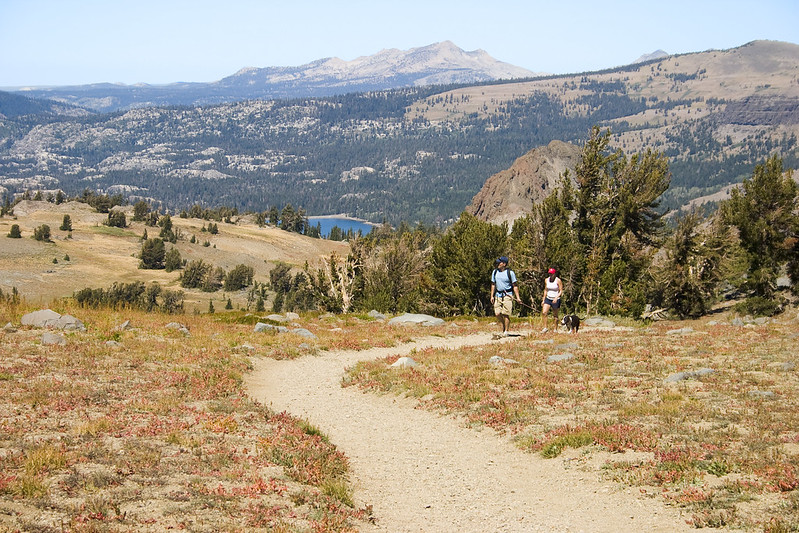
Starting from the Cades Cove area, this 1.8-mile round-trip trail takes you to the top of a small mountain that offers surprisingly good views for such a short hike. The trail climbs steadily through mixed forests, passing several interesting rock formations and small caves along the way. The summit provides views of Cades Cove and the surrounding mountains, making it a perfect spot for a picnic lunch. The trail sees relatively few visitors, especially compared to the crowded loop road in Cades Cove below.
Finley Cane Trail
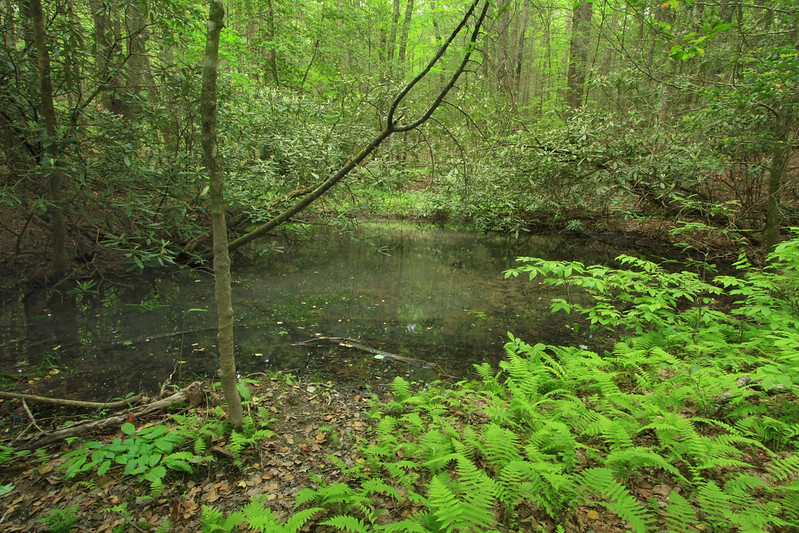
This 3-mile round-trip trail starts from the Forge Creek area and takes you through some of the park’s most beautiful creek-side walking. The trail follows Forge Creek through a narrow valley filled with rhododendron and mountain laurel that create a natural tunnel effect. You’ll cross the creek several times on log bridges, and the sound of flowing water provides a constant soundtrack for your hike. The trail ends at a beautiful swimming hole surrounded by large boulders that make perfect spots for relaxing or sunbathing.
Huskey Gap Trail
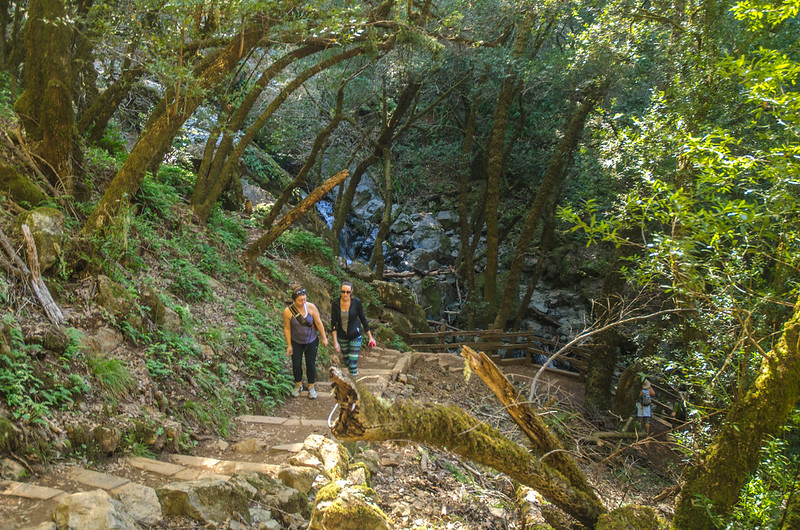
This 4.2-mile round-trip trail offers one of the best wildflower displays in the entire park, yet it remains relatively unknown to most visitors. The trail starts from the Cataract Falls parking area and climbs gradually through forests that explode with color in spring and fall. You’ll pass through several different forest types, from hemlock groves to open hardwood forests, each with its own unique collection of plants and wildlife. The trail ends at Huskey Gap, a beautiful mountain meadow that provides excellent views of the surrounding peaks.
Appalachian Trail to Spence Field
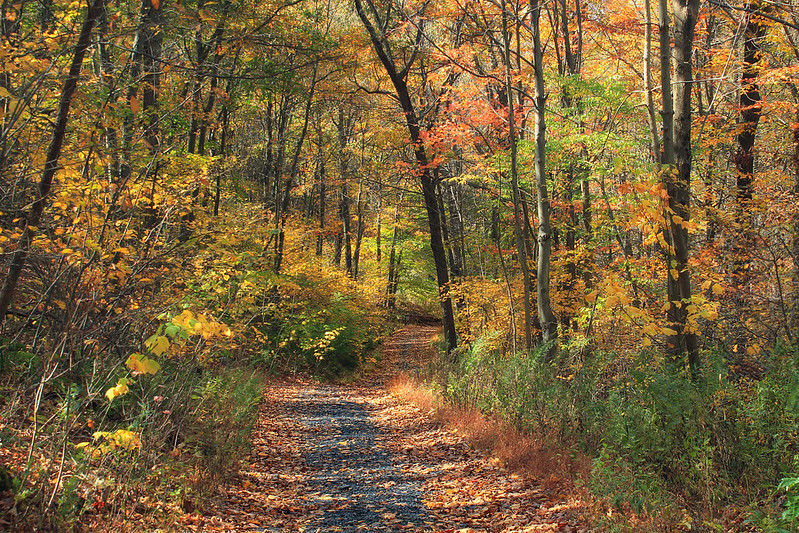
This 10-mile round-trip section of the famous Appalachian Trail offers some of the most spectacular high-elevation hiking in the park. The trail starts from the Cades Cove area and climbs steadily to Spence Field, a beautiful mountain meadow that provides 360-degree views of the surrounding mountains. The path passes through several different forest types, from low-elevation hardwoods to high-elevation spruce and fir forests. The meadow itself is filled with wildflowers in summer and offers excellent camping opportunities for those with the required backcountry permits.
Meigs Creek Trail
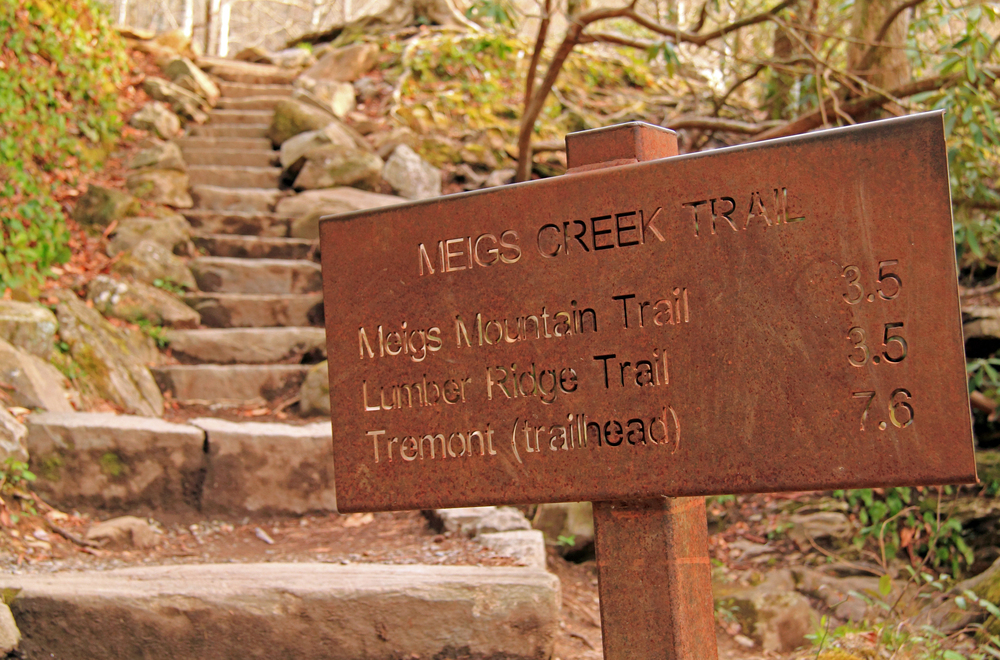
This 3.8-mile round-trip trail follows an old logging road through some of the park’s most pristine creek-side habitat. The trail starts from the Sinks on the Little River Road and follows Meigs Creek through a beautiful valley filled with massive boulders and towering trees. You’ll cross the creek several times on sturdy bridges, and the clear water provides excellent opportunities to spot native brook trout and salamanders. The trail also passes several old homesites, including stone foundations and rusty farm equipment that tell the story of the families who once lived in this remote valley.
Rough Fork Trail
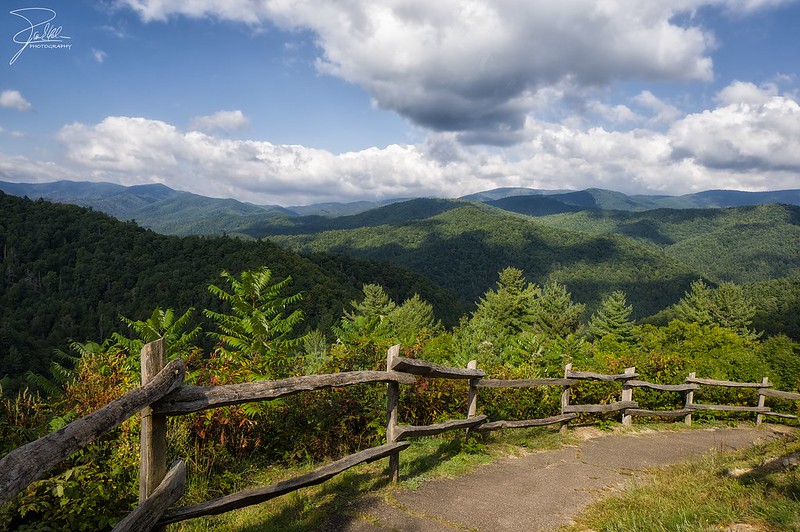
Starting from the Cataloochee area, this 5-mile round-trip trail takes you through some of the park’s most historic and beautiful landscapes. The trail follows Rough Fork through a valley that was once home to a thriving mountain community, and you’ll pass several well-preserved log cabins and historic buildings along the way. The path winds through beautiful hardwood forests and crosses the creek multiple times, providing excellent opportunities to spot wildlife. The remoteness of the Cataloochee area means you’ll often have the entire trail to yourself, despite its historical significance.
Cove Hardwood Nature Trail
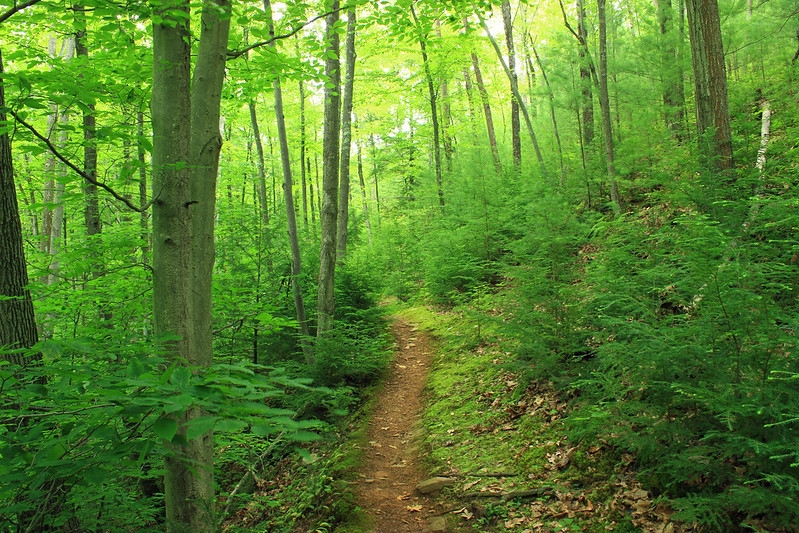
This easy 1-mile loop trail near the Chimneys Picnic Area offers one of the best introductions to the park’s incredible plant diversity. The trail winds through an old-growth forest filled with massive tulip poplars, hemlocks, and other native trees that create a natural cathedral effect. Interpretive signs along the way help you identify the incredible variety of plants and animals that call this ecosystem home. The trail is perfect for families with young children, and the short distance means you can take your time to really appreciate the subtle beauty of the forest.
Where Ancient Paths Meet Modern Adventures
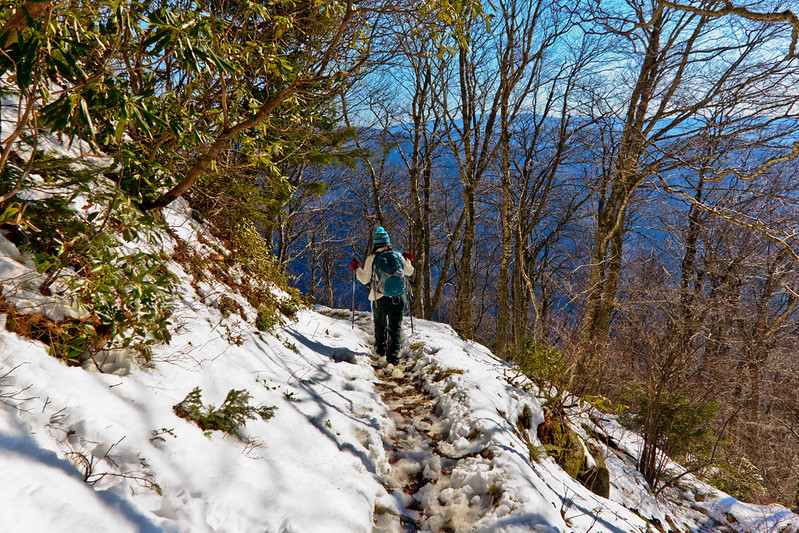
These lesser-known trails represent something special in our increasingly crowded world – places where you can still find solitude and connect with nature on your own terms. While millions of visitors flock to the same handful of popular destinations each year, these hidden gems offer the same spectacular scenery and rewarding experiences that made the Smokies famous in the first place. The mountains themselves haven’t changed much since the Cherokee first walked these ridges centuries ago, but our appreciation for quiet places has perhaps never been more important. Next time you’re planning a trip to the Smokies, consider leaving the crowds behind and discovering what these forgotten trails have to offer.
More from Travel Pug

- 20 Best Beach Towns in the Carolinas
- 13 Destinations Where Tourists Regularly Regret Their Trip
- 20 Things You Actually Get in First Class
- 20 Small Airports With Aviation Museums
- 20 Places in the U.S. That Are Perfect for a Reset Trip
Like Travel Pug’s content? Follow us on MSN.
